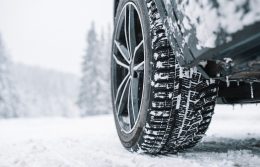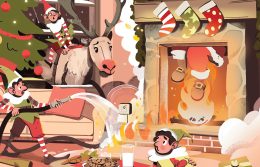How the Cold Weather Affects Your Car
We all learned this past year that, despite Texas’ long, hot summers, its temperamental weather patterns can serve up some wicked cold spells. Winter Storm Uri brought shockingly low temperatures to the state in February, and Texans found themselves wrestling with a nightmare of power outages, burst pipes, and other cold-weather catastrophes.
Besides our homes, our cars are the most valuable items we own that are especially vulnerable to weather. Cold weather can wreak damage on engines, freeze locks, and cause other headaches. To help you weather the next cold spell in Texas, learn how cold weather affects your car. Here are some warning signs your car gives when it’s in danger of damage and our advice for preparing it for a freeze.
7 Signs Your Car Is Cold
1. Deflated Tires
What happens: Air compresses in cold temperatures, causing air pressure to drop in tires.
How to prevent it: Check your tire pressure. If your tires are already low, deflation from a freeze could render them flat.
2. Dead Batteries
What happens: Cold weather can inhibit the energy-producing chemical reaction inside batteries.
How to prevent it: Check your battery charge and recharge ahead of any expected freezing temperatures. If your battery is already low on charge, it will be tougher to start in the cold.
3. Thick Oil
What happens: If the oil temperature drops below 20 degrees F, the oil becomes too thick to pump through the engine.
How to prevent it: Change your oil. Older, dirty oil is more likely to thicken, making it more difficult to operate your engine in low temperatures.
4. Icy Fuel Line
What happens: Although gasoline itself won’t freeze (unless temperatures drop to 100 below zero), condensation can create moisture in fuel lines, and, in extremely cold temperatures, the condensation can freeze.
How to prevent it: Check your fluids. Make sure your tanks are at least half full before the temperature drops and treat your fuel tank with a dry gas to make sure water that could potentially freeze is not building up in your engine and fuel lines.
5. Frozen Windshield
What happens: Ice forming on the windshield is one of the first and most common impacts of a cold snap, but when it gets really cold, ice can freeze inside the vehicle as well. Frozen windshields can inhibit vision and make windshield wipers inoperable.
How to prevent it: Check your windshield wiper fluid levels and top off antifreeze.
6. Frozen Locks
What happens: Even the tiniest amount of moisture in your vehicle’s locking system can freeze the locks, making it nearly impossible to open your car until everything thaws.
How to prevent it: Apply lubricant to prevent moisture from gathering or place a magnet over the keyhole.
7. Failure to Start
What happens: In cold temperatures, the chemical reactions in your car battery that produce energy can slow down, resulting in less power production needed for acceleration.
How to prevent it: If possible, store your car somewhere that’s protected from the elements. A garage is ideal, but even parking your car under a carport or the shade of a tree can provide some protection. If you are unable to keep your car warm enough, read on for tips on starting your car in the cold.
6 Steps to Starting Your Car in the Cold
Creating the spark that’s necessary to kick-start your engine can be difficult. If you’re starting up your car on a cold day, follow these simple steps.
1. Conserve Energy: Turn off your radio, heater, defroster, headlights, and windshield wipers. You might think starting the defroster or heater may warm up your car, but your battery needs to focus all its energy on getting the car started. In the cold, start it cold.
2. Don’t Idle: Although many drivers start their cars early in the cold weather and let them idle to warm up, studies have shown that cars warm up quicker when they are driven. Once you start your car, drive it slowly for about 30 seconds to allow the engine, heater, and other systems to warm up.
3. Hit the Ignition: Turn the key and hold it, allowing the engine to fire for about 10 seconds. This will allow fuel to move into the engine. If the car doesn’t start after 10 seconds, let the engine rest before attempting to start the car again.
4. Hit It Again: Sometimes, if a car won’t start on the first try, the process of trying to start the car will create enough warmth to get it started on a second attempt. Try a few times to start the car while waiting a few minutes between each start.
5. Warm the Battery: One trick to get your battery working in cold weather is to remove it from the car and warm it up. Take it inside, let it thaw out, and then return it to the car and try again.
6. Jump the Car: If none of these strategies work, you can jump the car. Once the car is started, the engine will warm, and you should be able to get underway.
Other Cold Car Precautions
As you prepare your car before a cold snap, take a few minutes to make sure that you remove items that can be damaged in freezing temperatures. These include:
- Medication: Most medications should be stored between 68 and 77 degrees F. If the temperature drops below freezing, medications can lose their potency or become ineffective. Some medications, such as antibiotics, can also become toxic if they freeze.
- Carbonated beverages and canned food: When frozen, food and liquids in airtight containers can expand, burst, or even explode.
- Musical instruments: Cold weather can warp brass, crack wood, overtighten strings, and damage sensitive instruments in many ways.
- Electronics: Although it won’t cause permanent damage, the cold temperature will limit battery power on your cellphone and other electronics.
If it’s absolutely necessary to drive during icy or snowy weather, be sure to follow proper safety tips for navigating dangerous road conditions.
© 2021 Texas Farm Bureau Insurance



